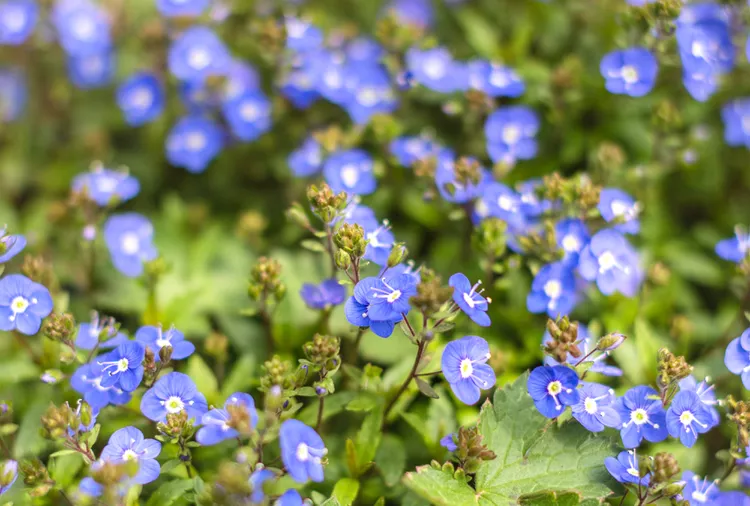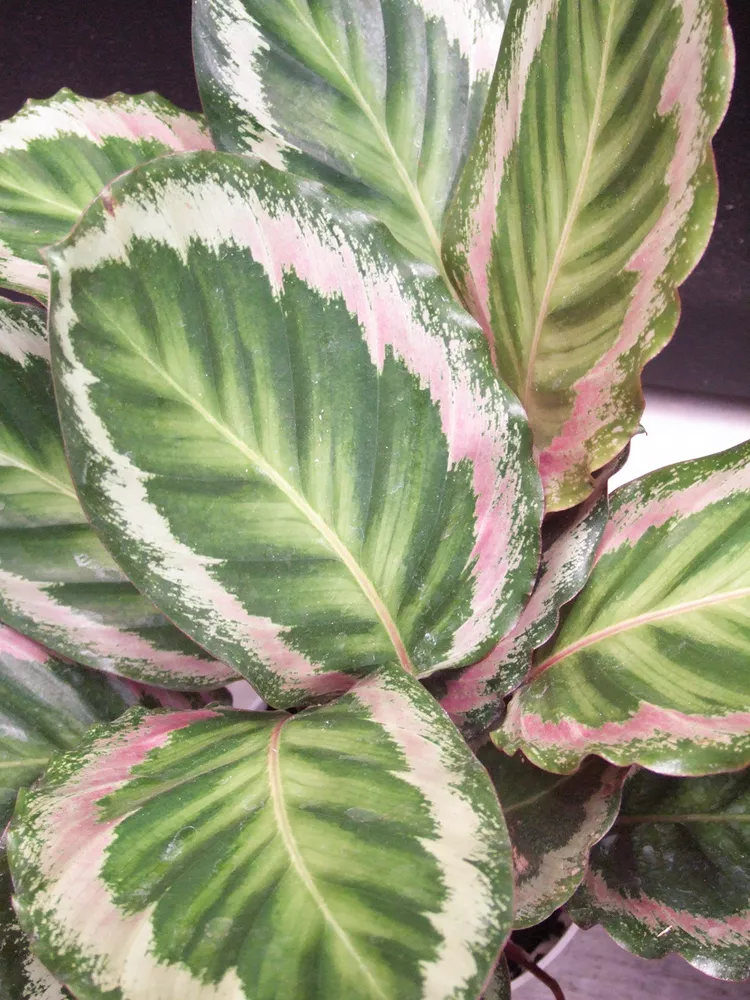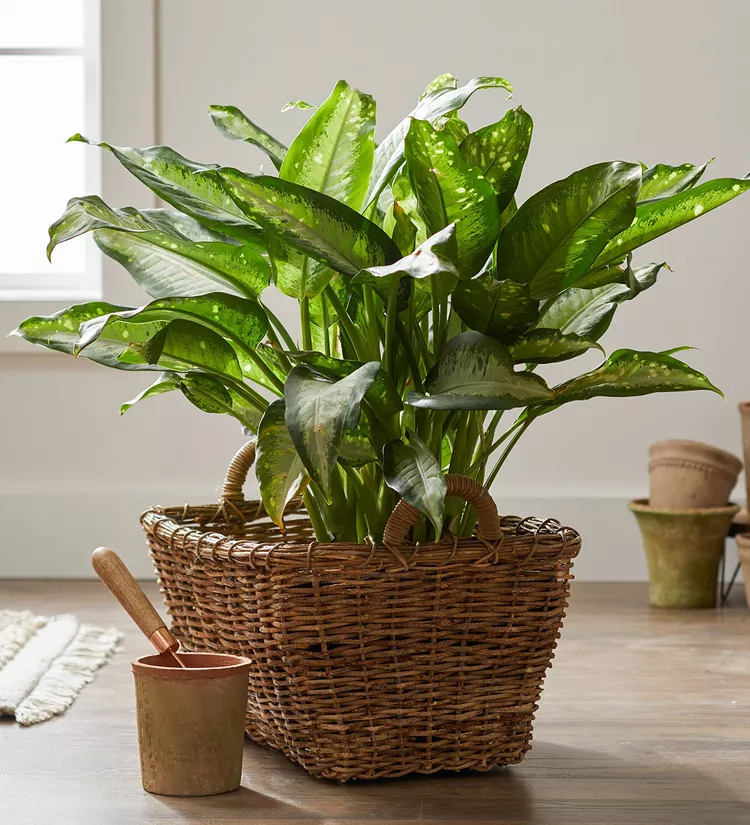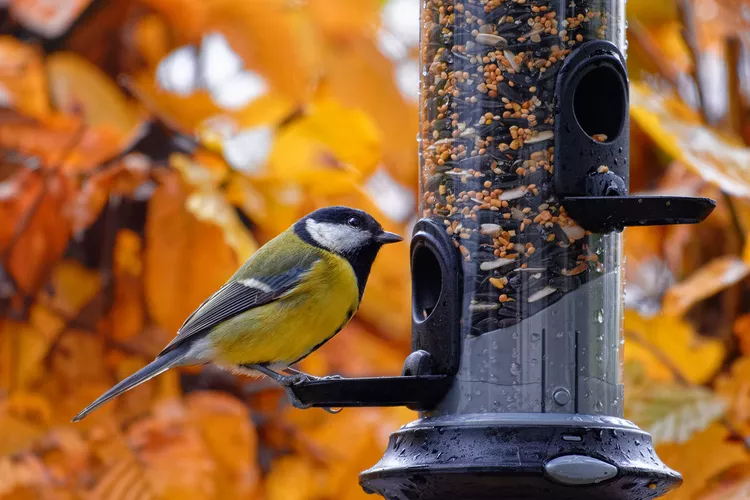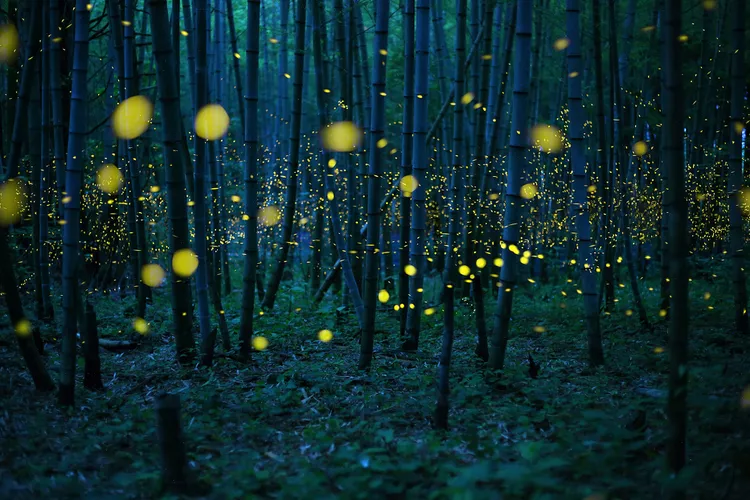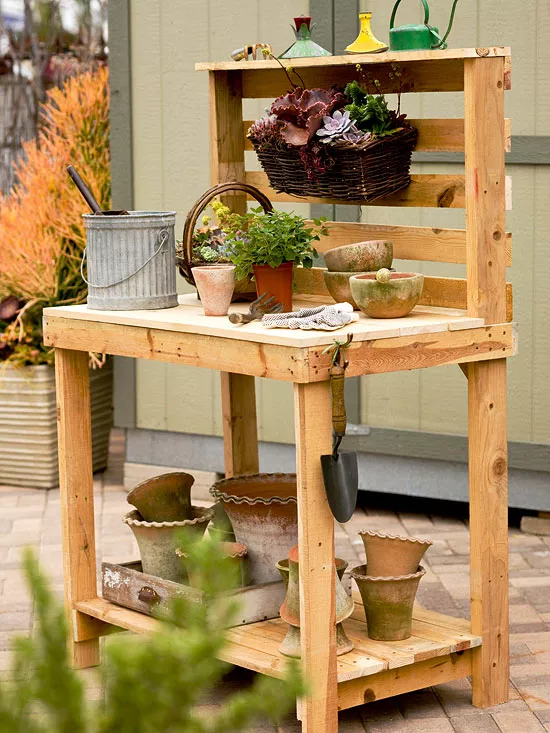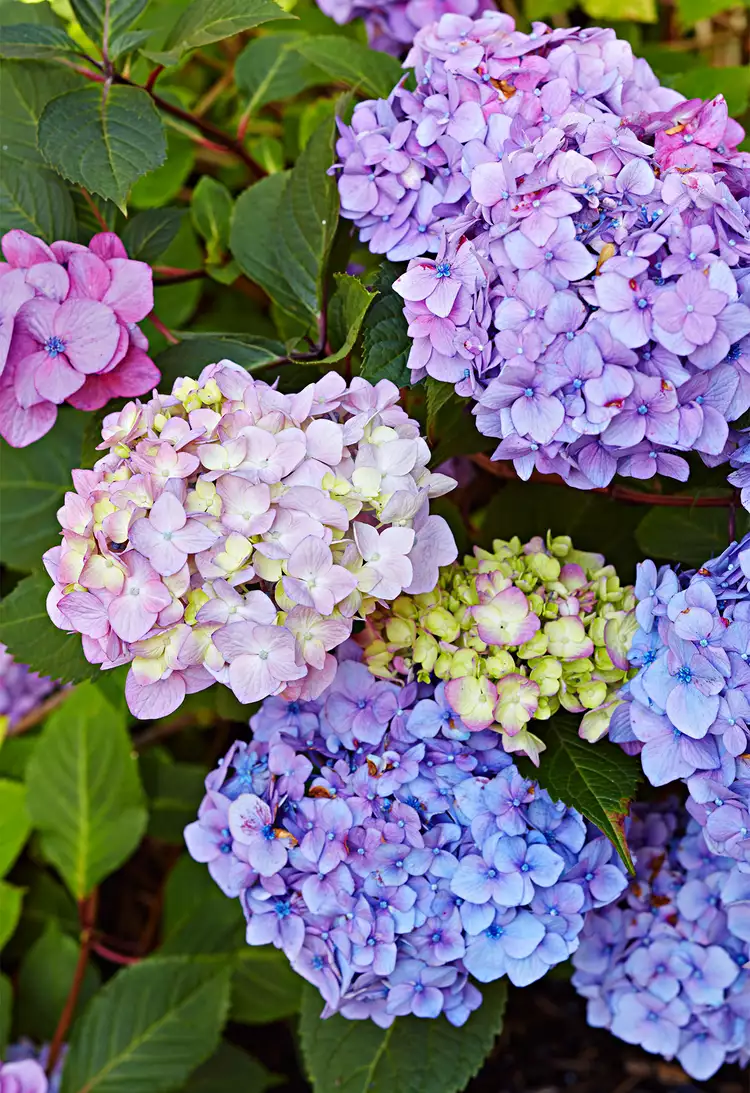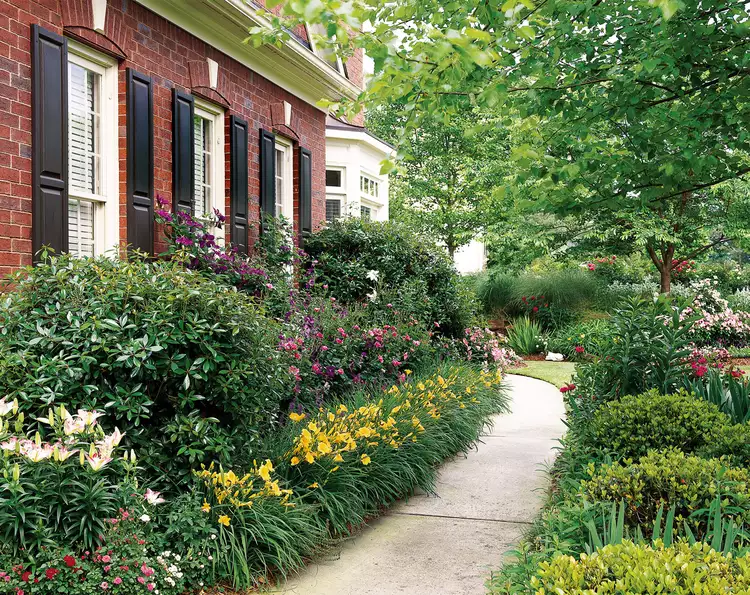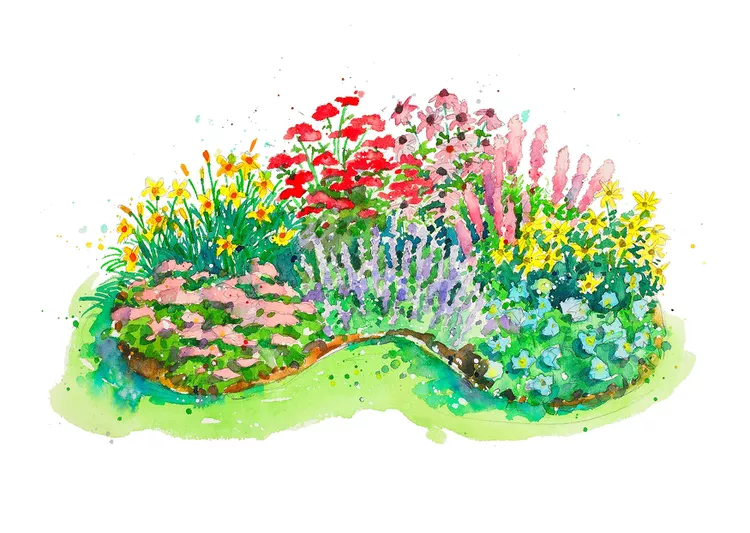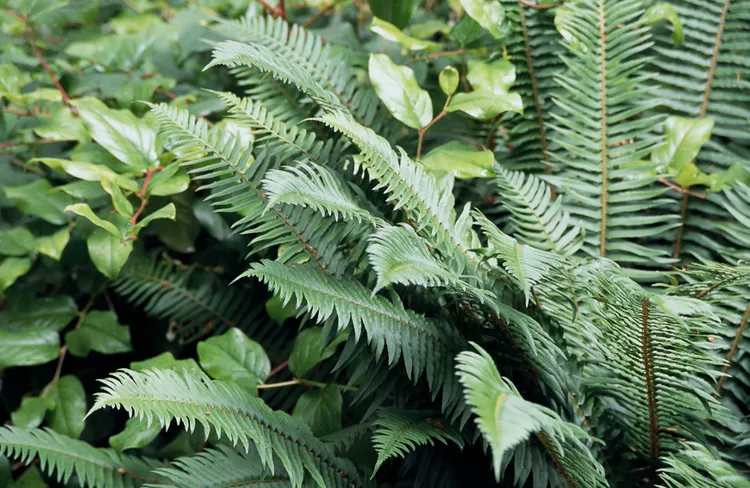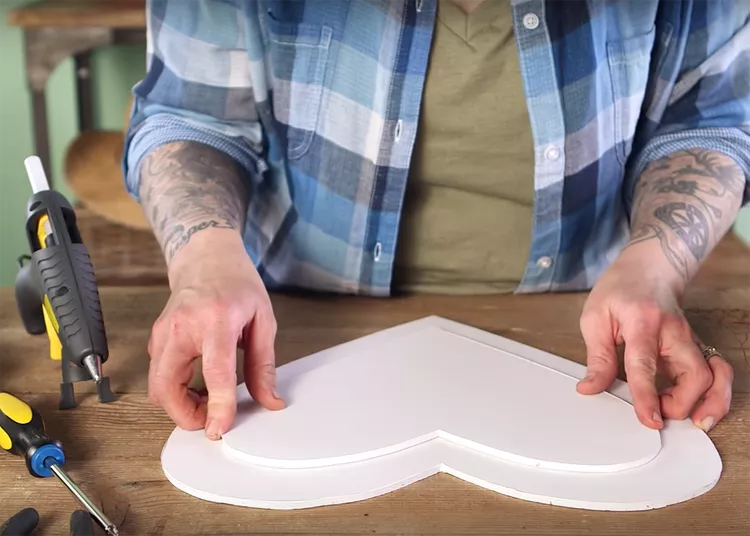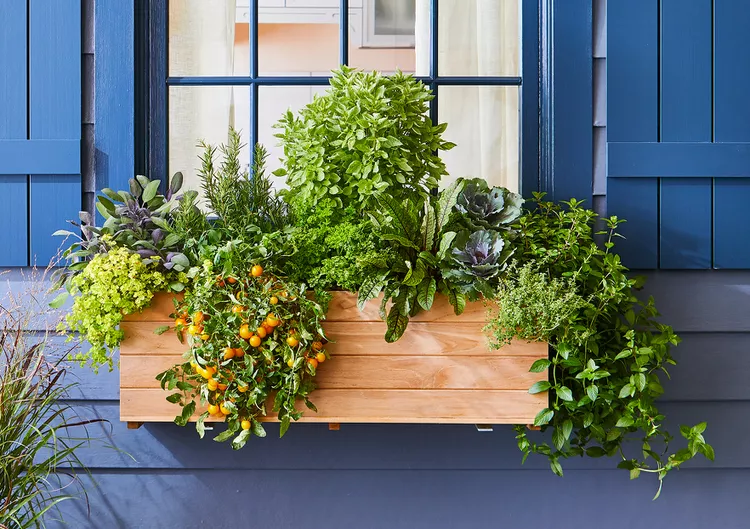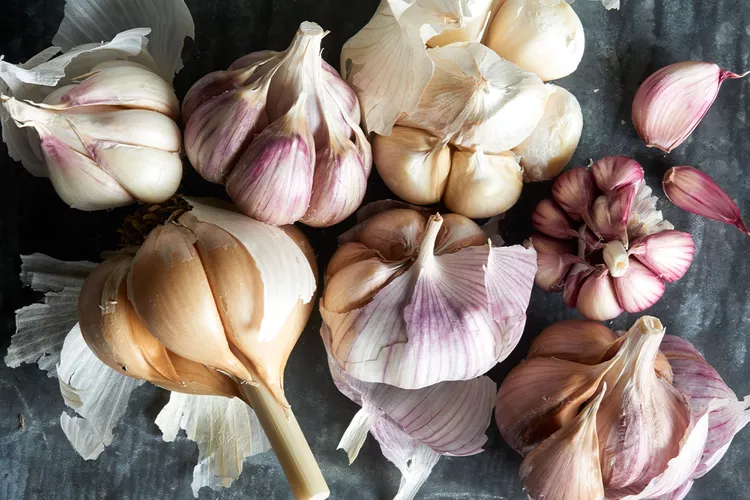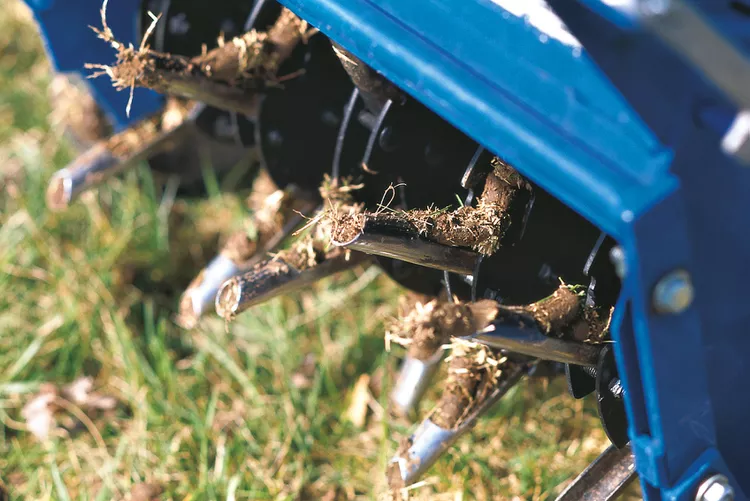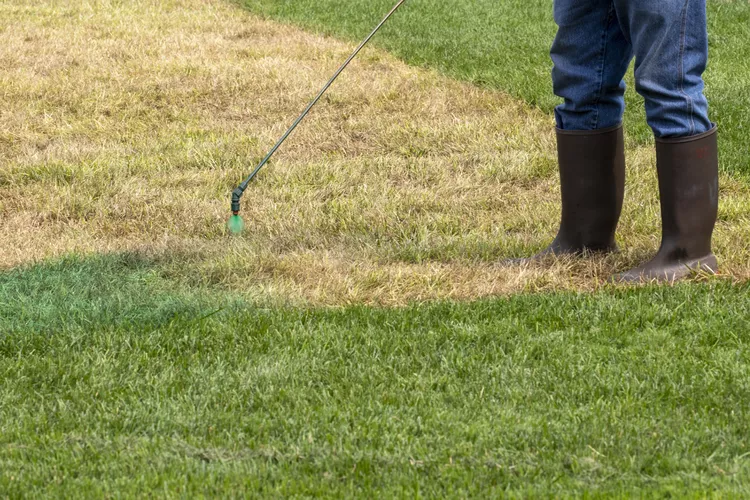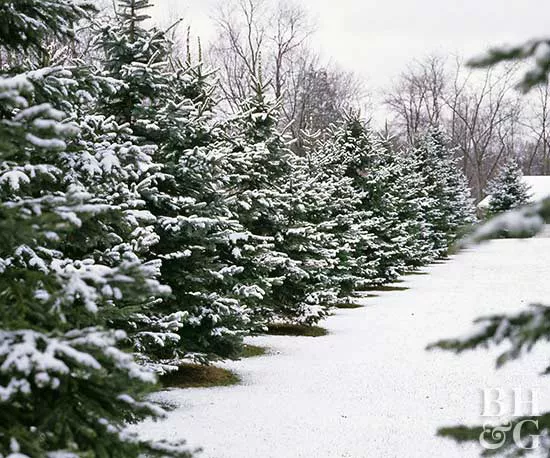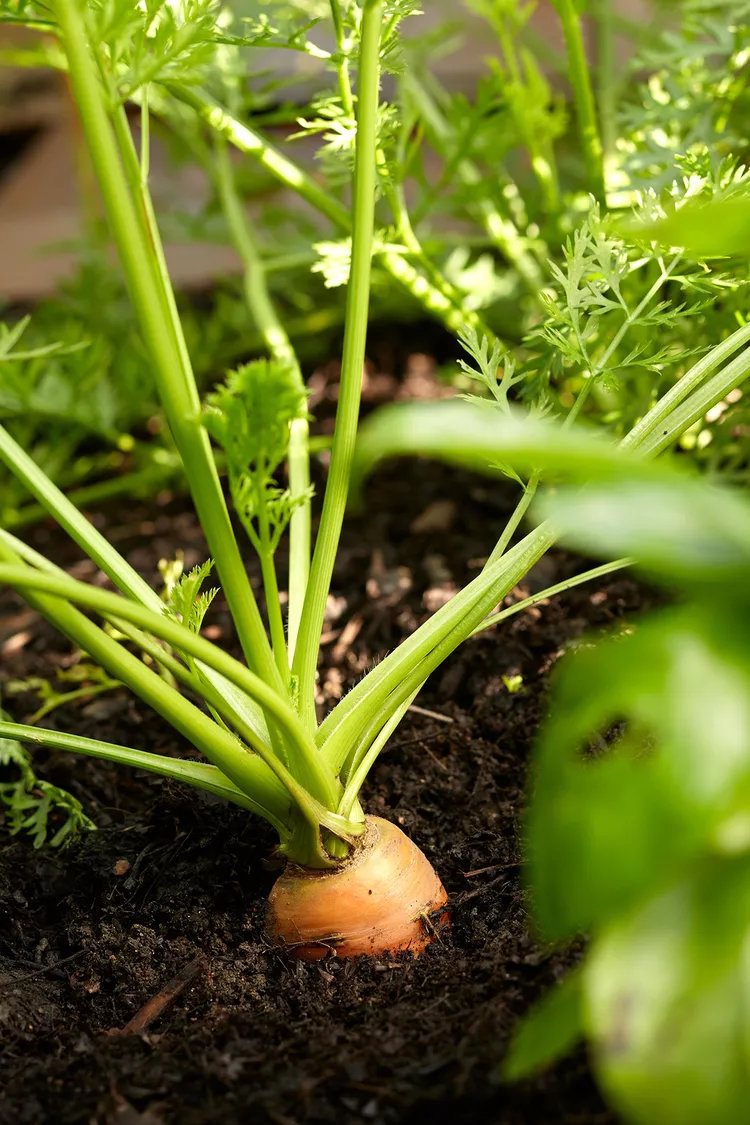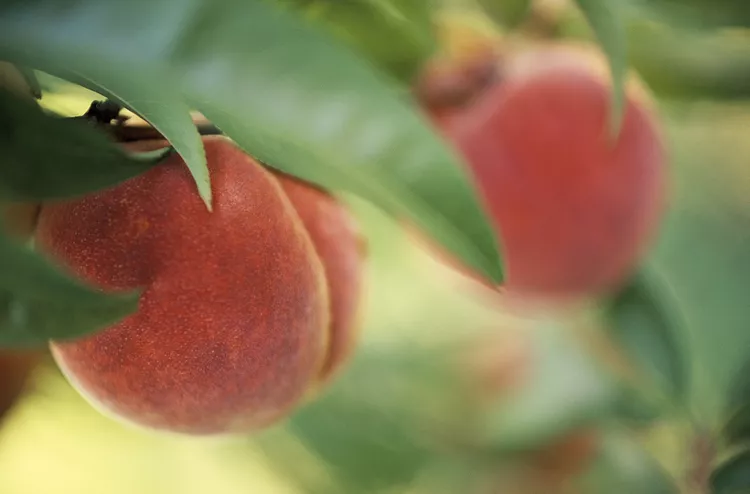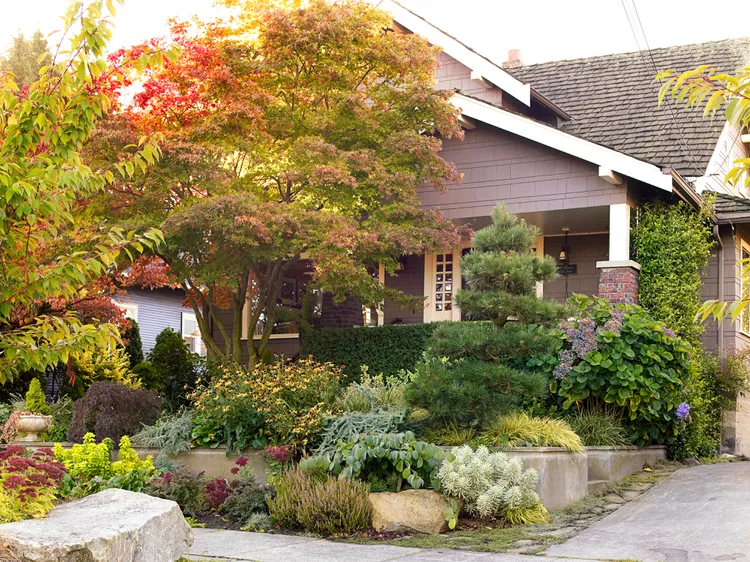Eye-catching weeds with purple flowers are at home all over the yard. They pop up in landscape beds and vegetable gardens. They ramble in the lawn and creep between the stones in a patio. The first step to sending one of these aggressive garden weeds packing is to identify it. This list includes some of the most common weeds with purple flowers to help you identify your local invader. Each weed summary includes tips for eradication for the specific species and lawn maintenance tips you can use to prevent the weed from spreading.
Wild Violet
Bright-eyed purple flowers rise above the heart-shaped foliage of this spring flowering weed. A clump-forming plant, wild violet (Viola sororia) grows in small patches that expand year after year.
Commonly Found: Wild violet grows in moist, shady sites including lawns and landscape beds. It can become especially prolific in shaded, thin turf grass.
Control Tips: Wild violet is difficult to eradicate. Hand-pulling is rarely effective as every bit of the roots must be removed; plants quickly spring back from tiny bits of root remaining in the soil. Control wild violets in a lawn by increasing the density of the turf grass through fertilization, regular mowing, and selecting a grass that is well-adapted to the conditions of the site.
Ground Ivy
This vigorous perennial weed has long slender stems and kidney-shaped leaves. Also known as creeping Charlie, ground ivy (Glechoma hederacea) produces purple flowers in spring. The aggressive weed gains ground by forming roots along the above-ground stems. In a season or two ground ivy can take over a big swath of ground.
Commonly Found: Ground ivy invades lawns and landscapes, preferring moist, shady sites but it will grow in full sun.
Control Tips: In small areas ground ivy can be controlled by pulling or digging. This is easiest after a soaking rain. Repeated removal is necessary because ground ivy will regrow from the tiniest root left behind in the soil. Herbicides can be effective although some populations of ground ivy are tolerant of popular chemicals. The best defense against ground ivy is a healthy lawn than can out-compete the ground ivy.
Henbit
Blooming in spring, henbit (Lamium amplexicaule) has pinkish-purple flowers on top of unique 4-sided stems that are purplish in color. Rounded leaves encircle the stem of this winter annual. Henbit germinates in fall, survives winter, and then blooms in spring, sets seed, and dies in early summer.
Commonly Found: Henbit is commonly found in areas where little other vegetation is thriving, such as construction sites and roadsides. It becomes aggressive in lawns when the turf grass is struggling to survive.
Control Tips: The best way to discourage the spread of henbit and eventually eliminate it is a vigorous lawn. With proper fertilization and mowing, a well-suited grass species for the growing conditions will out-compete henbit.
Purple Deadnettle
Closely related to henbit, purple deadnettle (Lamium purpureum) has a triangular leaf-shape versus henbit’s more circular shape. Deadnettle has purple tinged foliage whereas henbit’s foliage is consistently green. Deadnettle has 4-sided stems, purple flowers in spring, and a sprawling growth habit.
Commonly Found: Purple deadnettle is mainly found in soil that is disturbed in fall when it germinates. It can invade thin lawns and open flower beds. This winter annual takes root in loose soil and overwinters before blooming, setting seed, and dying in spring.
Control Tips: Hand-pulling, along with good lawn management are the best ways to control purple deadnettle. Hand pull stands of purple deadnettle as soon as it is noticed in landscape beds. Fertilize, water, and properly mow turf grass to create a strong stand that will eventually overtake the purple deadnettle.
Purple Loosestrife
A bold, branching perennial, purple loosestrife (Lythrum salicaria) stands 5 feet tall at maturity. It has spikes of purple flowers in summer and fall. Purple loosestrife was once sold as an ornamental perennial plant but has been identified as an invasive species in most areas and is no longer in commerce.
Commonly Found: Preferring moist to wet growing sites, purple loosestrife is common in low spots, ditches, and wetlands. It is particularly invasive near waterways.
Control Tips: Hand pulling combined with flower removal is generally effective for small stands of this weed with purple flowers. Hand-pull the weeds as soon as they are noticed, being careful to remove the entire root system. If the weeds are in flower, quickly remove the flower stalks to prevent the seed from ripening and making the problem worse. After removing the flowers, hand-pull the plants.
Canada Thistle
This prickly perennial is easy to spot. Its large, toothed foliage is gray-green and covered with spines. Lavender flowers bloom in mid-summer on top of 3- to 5-foot-tall stems. Canada thistle (Cirsium arvense) produces abundant seeds in late summer and fall.
Commonly Found: These weeds with purple flowers grow just about anywhere. They take root in lean or rich soil and in sun or shade.
Control Tips: Canada thistle is nearly impossible to eradicate by digging or pulling. Small root fragments remaining in the soil will regrow. A strong, non-selective herbicide is effective. Limit the spread of Canada thistle by clipping off flower clusters before they mature and set seed.
Common Burdock
Boasting spiny flowers like a thistle along with smooth, green leaves, burdock (Arctium minus) is a unique plant. It often grows 3 to 5 feet tall and the purple gumdrop-shaped flowers debut from mid-summer through fall.
Commonly Found: Burdock is often found in grassy areas and disturbed soil, such as construction sites.
Control Tips: Pull burdock by hand when plants are small. Dig up large plants, being careful to remove all the tough taproot. If you don’t have time to remove the plant promptly, limit spread by removing flowers before they set seed.
Comfrey
Although it has a long history of culinary and medicinal use, comfrey (Symphytum officinale) spreads aggressively and has become weedy in many areas. It grows 1 to 3 feet tall and has oval leaves and nodding purple flowers in summer.
Commonly Found: Comfrey commonly grows in full sun and disturbed, lean soil.
Control Tips: Hand pull young plants and dig up large plants, being careful to remove the entire root system.
Bull Thistle
Bull thistle (Cirsium vulgare) is a biennial weed. It germinates in spring and forms a cluster of leaves the first year of growth. It produces purple flowers and seeds in year two before dying. Very similar to perennial Canada thistle, bull thistle has more finely cut foliage and a pronounced blue-green color versus gray-green Canada thistle.
Commonly Found: Bull thistle thrives in rich, moist soil.
Control Tips: Hand-pulling and hoeing are effective for small plants. Dig up mature plants, removing all parts of the root system. If you don’t have time to remove the plant promptly, limit spread by removing flowers before they set seed.
Chicory
This airy plant with light purple flowers is frequently spotted on the roadside. Perennial chicory (Cichorium intybus) has toothed leaves like those of a dandelion. It blooms from mid-summer through fall and stands 1 to 3 feet tall.
Commonly Found: Chicory grows well in grassy areas and lean, sandy soil.
Control Tips: Hand pulling and hoeing are the best methods for controlling chicory in landscape beds. If a lawn is infested with chicory, improve the density of the turf grass through proper mowing and fertilization and the grass will likely overtake the chicory.
Asiatic Dayflower
Three-petalled, blue to purple flowers dot the stems of Asiatic dayflower (Commelina communis) as it creeps along the ground. This problematic weed in gardens and lawns hugs the ground, evading mower blades and crawling under plant foliage. It blooms June through October.
Commonly Found: Asiatic dayflower grows in consistently moist soil and is frequently found in boggy, low-lying areas.
Control Tips: Hand pull Asiatic dayflower as soon as it is noticed. Dense infestations in lawns are best combatted by increasing the health of the turf so that it will overtake Asiatic dayflower. Improve the soil fertility and mowing practices to promote a healthy lawn.
Speedwell
A low-growing weed with round leave and bluish purple flowers, speedwell is a common lawn weed in many areas. Speedwell’s long stems hug the ground, avoiding mower blades and expanding across large swaths of soil.
Commonly Found: Speedwell grows best in light, sandy soil that has minimal nutrients. It grows in sun or shade.
Control Tips: Hand pulling speedwell when it is young can be effective in small infestations. Be sure to remove all plant parts to prevent it from growing back. Treat large stands of speedwell with a selective broadleaf weed killer when the plant is actively growing. A healthy, dense lawn will naturally eliminate speedwell.
Lespedeza
Also known as Japanese clover, lespedeza (Kummerowia striata) can easily choke out a thin stand of turf grass with its mat-forming, wiry stems. Its pinkish purple flowers appear in late summer. Because lespedeza grows so close to the ground it usually avoids mower blades.
Commonly Found: Lespedeza makes its home in full sun and areas with sandy, lean soil. It grows well on sites where the soil has been disturbed and compacted, such as construction areas and near driveways and roadsides.
Control Tips: Hand pulling is a great way to get rid of lespedeza when it invades landscape beds. Control lespedeza in turf grass by maintaining a healthy lawn. Fertilize adequately because lespedeza grows best in low fertility soil; it struggles to survive in fertile conditions. Mow and water appropriately for the turf species. Finally, use herbicides specially formulated for lespedeza as a last resort.
Heal-All
Heal-all (Prunella vulgaris) is a perennial weed with rosettes of puckered, hairy leaves. In early to mid-summer, it sends up stems with tiny pineapple-shaped, purple flowers. In the right environment, it grows into large colonies of many plants that can eventually out-compete the surrounding turf.
Commonly Found: These weeds with purple flowers thrive in moist, shaded, well fertilized environments.
Control Tips: Hand pull heal-all in landscape beds. When it infests the lawn, the best control is good turf management practices. Don’t overfertilize. Choose a grass species that is well-suited to the growing conditions; the right grass species for the site will be able to out compete heal all.
